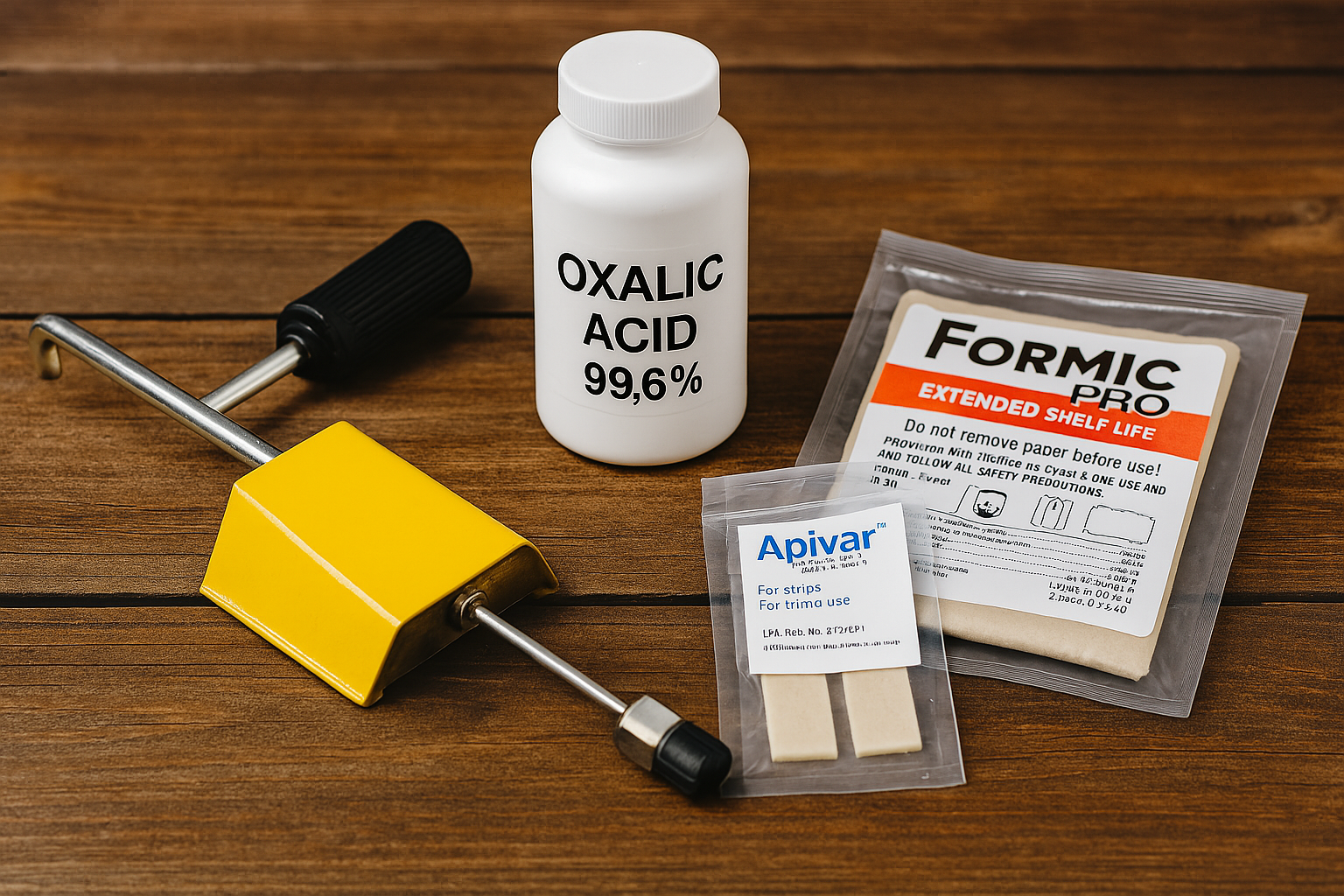Once you’ve confirmed varroa mites are present in your hive, the next step is figuring out how to manage them. There’s no single silver bullet, but there are several treatment options available—each with pros, cons, and considerations.
This post will give you a quick overview of a few of the more common varroa mite treatments so you can make an informed decision and build a plan that fits your bees, your region, and your philosophy.
Why Treating Is Non-Negotiable
If you’re keeping bees in North America (or most parts of the world), varroa mite treatment is not optional. Untreated colonies will almost always collapse, and in the process, they can spread mites to other hives in your area, creating what we refer to as a “varroa bomb”.
Treatment-free beekeeping may sound noble, but unless you’re working with isolated, heavily managed survivor stock and monitoring mite levels rigorously, it’s a fast path to failure.
Chemical Treatment Options
These are synthetic or organic compounds applied to the hive in carefully measured doses. All of them require strict attention to label directions, temperature guidelines, and timing.
1. Apivar (Amitraz)
- A synthetic miticide in the form of plastic strips placed in the brood chamber.
- Effective over a 42-day treatment window.
- Works well year round, regardless of ambient temperature or the brood cycle.
- Cannot be used with honey supers on the the hive.
(Full Apivar guide coming soon.)
2. Formic Pro (Formic Acid)
- Organic treatment using formic acid pads.
- One of the few treatments that can kill mites under the cappings.
- Can be hard on queens and brood and is considered a more aggressive treatment option.
- Can be used with honey supers on the the hive.
(Detailed Formic Pro how-to guide coming soon.)
3. Oxalic Acid
- Comes in three application forms: vaporization, drizzle (dribble), and shop towel/pad.
- Most effective during broodless periods. (treatments do not penetrate capped brood).
- Very popular with hobbyists for its ease of administration and effectiveness.
- Can be used with honey supers on the the hive.
(We’ll break down each OA method in separate posts: vaporization, pads, dribble)
4. HopGuard 3
- A newer “soft” treatment using hops-derived beta acids.
- Requires multiple applications.
- Works best during specific colony conditions.
- Can be used with honey supers on the the hive.
Integrated Pest Management (IPM)
IPM is a holistic approach that combines treatments with hive management techniques aimed at keeping mite populations below damaging levels. It doesn’t eliminate the need for chemical treatments but can reduce how often you need them.
Common IPM tools include:
- Sticky boards
- Drone comb removal
- Brood breaks
- Screened bottom boards
- Splits or caging the queen to interrupt brood cycles
Choosing the Right Treatment
The right treatment depends on:
- Time of year
- Whether brood is present
- Hive strength
- Local temperatures
- Your management style
For example:
- Oxalic acid is great during periods of dearth or when opening the hive may not be an option (cooler temperatures). Multiple treatments required when capped brood is present.
- Formic Pro can be used when you want to hit mites under the cappings—but watch your temps.
- Apivar is slower but gentler and can be used year round.
Final Thoughts
The most important thing isn’t which treatment you choose—it’s that you have a plan. Monitor your mite levels regularly, understand your timing windows, and commit to taking action when thresholds are reached.
We’ll be breaking down each of the major treatment methods in dedicated posts so you can go deeper and apply them confidently.
